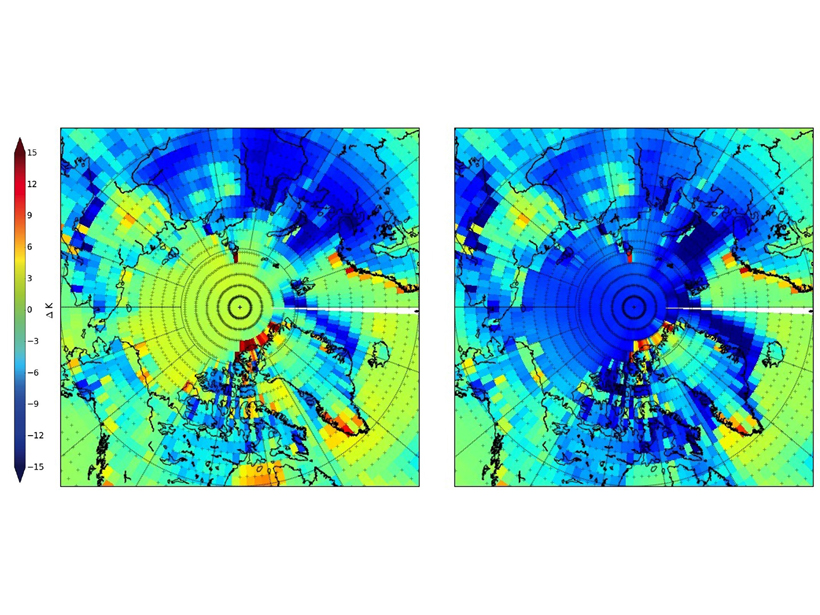Source: Journal of Geophysical Research: Atmospheres
Climate models commonly simulate too cold surface temperatures in the Arctic. In the Community Earth System Model (CESM), the systematic cold bias in the winter is about 7 Kelvin degrees when averaged over the Arctic. Kuo et al. [2018] found that using more realistic spectrally resolved surface emissivity can significantly reduce the CESM cold bias to about 1 Kelvin degree. The improved surface emissivity also introduces a longwave equivalent of the positive shortwave albedo feedback that had received little attention before. This positive feedback affects the simulated magnitude of climate variability and change in the Arctic.
Citation: Kuo, C., Feldman, D. R., Huang, X., Flanner, M., Yang, P., & Chen, X. [2018]. Time-dependent cryospheric longwave surface emissivity feedback in the Community Earth System Model. Journal of Geophysical Research: Atmospheres, 123. https://doi.org/10.1002/2017JD027595
—Minghua Zhang, Editor-in-Chief, JGR: Atmospheres
Text © 2018. The authors. CC BY-NC-ND 3.0
Except where otherwise noted, images are subject to copyright. Any reuse without express permission from the copyright owner is prohibited.

